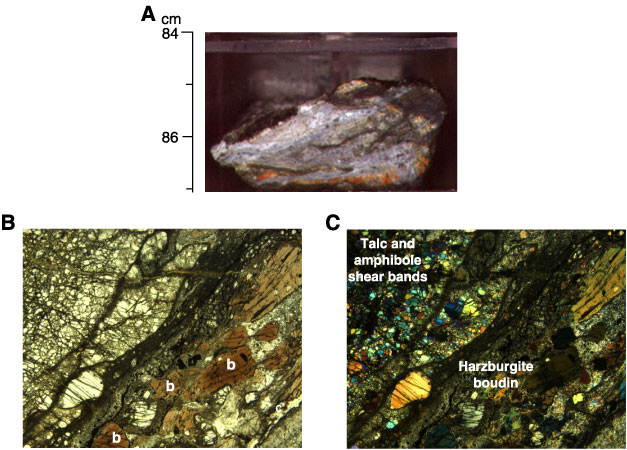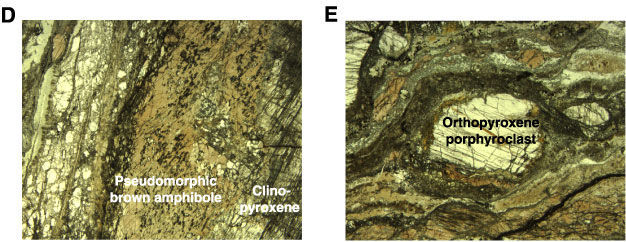
Figure F39. Macroscopic and microscopic textures of deformed serpentinized harzburgite hosting gabbroic schlieren (interval 209-1270C-1R-1, 84–87 cm). A. Close-up photograph of serpentinized harzburgite with deformed gabbroic veins or dikes. The veins contain clasts of fresh harzburgite (arrow) that have been incorporated into the deformed zone. B–E. Photomicrographs showing features from the same interval as that in A (Sample 209-1270C-1R-1, 83–85 cm). (B) In thin section, the gabbroic veins are anastomosing talc-rich shear bands that probably formed during high-temperature deformation. Brown amphibole (b) replaces pyroxene neoblasts and porphyroclasts in the shear band. Folded veins of chrysotile (c) also occur in the shear band (dark vein, lower right) (plane-polarized light: blue + light gray filters; field of view = 5.5 mm; image 1270C_008). (C) Boudins of fresh harzburgite are cut by smaller shear bands containing talc and brown amphibole (cross-polarized light: blue + light gray filters; field of view = 5.5 mm; image 1270C_007).
(D) A large clinopyroxene crystal in a boudin within sheared peridotite is replaced by pseudomorphic brown amphibole close to a sheared gabbroic band. Relics of clinopyroxene are preserved within amphibole and have continuous extinction (plane-polarized light: blue + dark gray filters; field of view = 2.75 mm; image 1270C_004). (E) An orthopyroxene porphyroclast in a gabbroic shear band is partly replaced by brown amphibole. Brown amphibole also replaces smaller pyroxene neoblasts along the shear band. Note that amphibole is absent within the boudins of fresher peridotite located above and below the shear band (plane-polarized light: blue + dark gray filters; field of view = 2.75 mm; image 1270C_003).





![]()